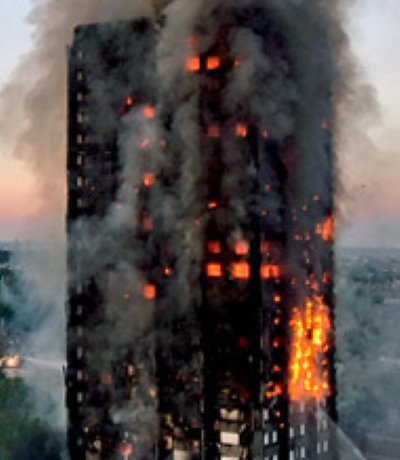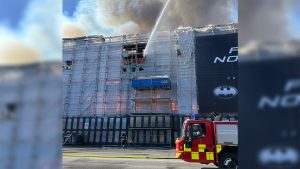Don’t expect a repeat of the London highrise fire in Vancouver, thanks to strict building codes and fire protection standards. The Grenfell Tower fire in London, England resulted in a tragic loss of life and created international headlines. In the days after the fire it was determined the building’s cladding played a part in accelerating the spread of the blaze throughout the highrise.
But according to City of Vancouver officials, measures are in place to prevent a similar tragedy from occurring in the Lower Mainland.
"We would not get this issue here," said City of Vancouver chief building official Patrick Ryan. "We have a strong regime for oversight."
Building envelopes put in place in Vancouver, building policy engineer Kevin Lau added, have no combustible products except those listed by the national building code.
"There’s a testing regime that has to happen here and construction plans must have proper listings," Lau said.
When a building goes above six storeys the code changes to reflect highrise requirements, Ryan said.
"It’s an entire code change. It sounds like the building in London was certified, but for the requirements of a low building," he said.
Additionally, Grenfell Tower only had one exit, which was compromised and prevented the residents from escaping. Vancouver buildings, even older ones, have at least two exits and even Single Resident Occupancy (SRO) buildings in one of Vancouver’s oldest neighbourhoods, the downtown eastside, have a fire escape in place in addition to an exit.
"We’ve had a requirement for at least two exits since 1965," Lau said. "In an emergency, that makes a big difference."
Thirteen SRO buildings were upgraded in the last two to three years, he added.
Vancouver also uses an upgrading model, Ryan said, where seismic or accessibility upgrades are accompanied by updated fire protection, "and that reduces the likelihood of an incident."
Sprinklers have been mandatory in B.C. for the past 18 years in all new residential buildings over four storeys, all highrise buildings over six storeys and all care facilities. The BC Building Code has also been updated to require fire sprinklers on the balconies of all new four storey and wood-frame residential buildings, effective July 20.
For buildings without sprinklers over three storeys in building height, combustible cladding systems are not permitted, according to the provincial government. Metal cladding over foam insulation is not permitted unless a building is sprinkled.
Wood buildings are built differently than traditional structures, but once built are as safe as any other form of building, Ryan stated.
"The risk of a fire is during construction, but once drywall is in place and sprinklers are installed, it’s no different," he said.
Fire alarm systems are operated remotely, Lau added, further reducing the risk of a highrise building in Vancouver suffering the fate of Grenfell Tower.
While the Grenfell fire, the 2014 highrise fire in Melbourne and the recent Honolulu, Hawaii fire are tragic, Vancouver officials use the lessons learned from those events for further protection at the local level, Ryan said.
"We keep an eye on incidents like London to see if we can learn anything from it, and we have multiple layers of defence. In Vancouver, you do have more options and redundancy," he said.












Recent Comments
comments for this post are closed